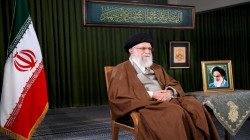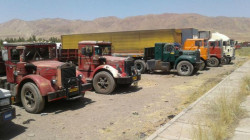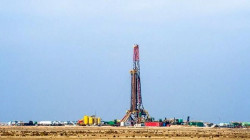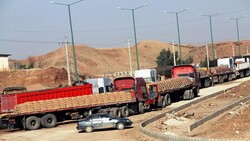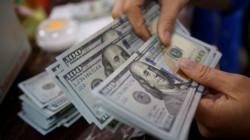Currency chaos: how Iran's economic crisis is affecting Iraq's key sectors
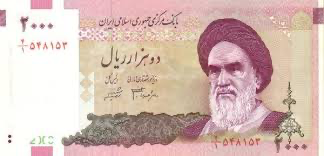
Shafaq News / The current unprecedented collapse of the Iranian currency, which has now reached the staggering exchange rate of five million rials per $100, resulting from the Western sanctions, has given rise to inquiries regarding the potential ramifications of this economic crisis on the Iraqi market and economy.
Economic experts have affirmed that Iraq's annual imports of nearly $17 billion make it the top importer of Iranian commodities. This is further compounded by the fact that the Iranian rial has plummeted to a historic low of 501,300 IRR against the U.S. dollar, as officially documented by the Bonbast website. This distressing development has raised concerns about the potential impact on Iraq's economic landscape, as well as the overall regional economic stability.
As unrest prevails and Western scrutiny over Iran's rigorous security measures and association with Russia continues to mount, the value of the U.S. dollar in Iran's black market has skyrocketed to record heights, causing Iran's increasing detachment from the global community.
According to economist Salam Simaism, Iran has firmly established itself as Iraq's primary supplier of goods and services, with an annual trade value of $17 billion, if not more. Consequently, any devaluation of Iran's currency could potentially amplify its already significant exports to Iraq, leading to a surge in imports from Iran, thereby bolstering its trade balance. This observation highlights the delicate trade balance between these neighboring nations and underscores the potentially far-reaching implications of currency fluctuations for their economic ties.
The strategic devaluation of a national currency is common among some nations seeking to boost their export performance. In light of Iraq's significant dependence on Iranian imports for a variety of essential goods and services, including but not limited to food, plastic, and construction supplies, a potential decline in the value of Iran's currency could significantly benefit its export industries, including the agricultural and manufacturing sectors. This phenomenon underscores the complex interdependence between neighboring nations in trade and finance and highlights the potential impacts of currency fluctuations on both countries' economic well-being.
It is worth noting that on February 21, Iranian Minister of Industry, Mines, and Trade, Reza Fatemi Amin, revealed that during the first ten months of the Iranian year, which began on March 21, 2022, Iran's exports to Iraq surged by 23%. He stated, "Iran's exports have exceeded $50 billion so far," emphasizing the many benefits that exports offer, "the first of which is to provide foreign exchange for the country's import requirements, and the ultimate objective is to achieve global domination."
Economist Ahmed Eid has argued that the implications of the Iranian currency's downfall are not limited to Iraq's industrial and agricultural sectors. It has numerous consequences, the foremost of which is the tourism industry (religious, recreational, and therapeutic). "The lower the value of the Iranian currency, the higher the appeal of hard currency as an attraction for foreign investors, as seen in Lebanon and other countries," he explains.
Furthermore, the Iraqi financial market has opened up to Iran, with fake Iraqi currency from Iran making its way into Iraq and hard currency being withdrawn and purchased from exchange points in Baghdad and other provinces, as well as the Kurdistan region, says Eid. "This suggests that the Iraqi financial market is being invaded by Iranian networks that withdraw hard currency from Iraq and smuggle it back to Iran illicitly."
Despite recent efforts by the regime, including the appointment of Mohammad-Reza Farzin as the governor of the Central Bank on December 30, 2022, the value of the Iranian rial against the dollar continues to plummet due to widespread protests and ongoing Western sanctions. In mid-September, when anti-government protests erupted, the rial traded at 315,000 to the dollar, following years of Western sanctions over Iran's nuclear program.
Sa'eb Radhi, head of the Najaf Hotels Association, believes that the devaluation of the Iranian rial has had a more negative impact on Iranian tourists than on their Iraqi counterparts. "Iranian tourists must pay for their accommodations, travel, and food in Iraqi dinars or U.S. dollars, while Iraqi tourists who travel to Iran face the cost of living despite the currency's devaluation."
Radhi explained to the Shafaq News Agency that "the U.S. sanctions on Iran have impacted all aspects of life and have caused prices to soar. So when Iraqi tourists visit Iran, Lebanon, or even Syria, they feel the price increase despite the decline in their currency. On the other hand, Iranian tourists can feel the high prices when they come to Iraq, but the dollar's value is lower than their currency."
Abu Ali, the owner of a fruit and vegetable store in Diwaniyah, has noted that "the fall of the Iranian currency harms us by increasing the country's export of agricultural crops to Iraq, including tomatoes, potatoes, and eggplants. Moreover, due to the lower cost of imported crops than local ones, the Iranian economy benefits at the expense of our domestic industry. Therefore, I urge the government to restrict imports from neighboring countries, particularly Iran, especially at this time, to prevent damage to our own products."
